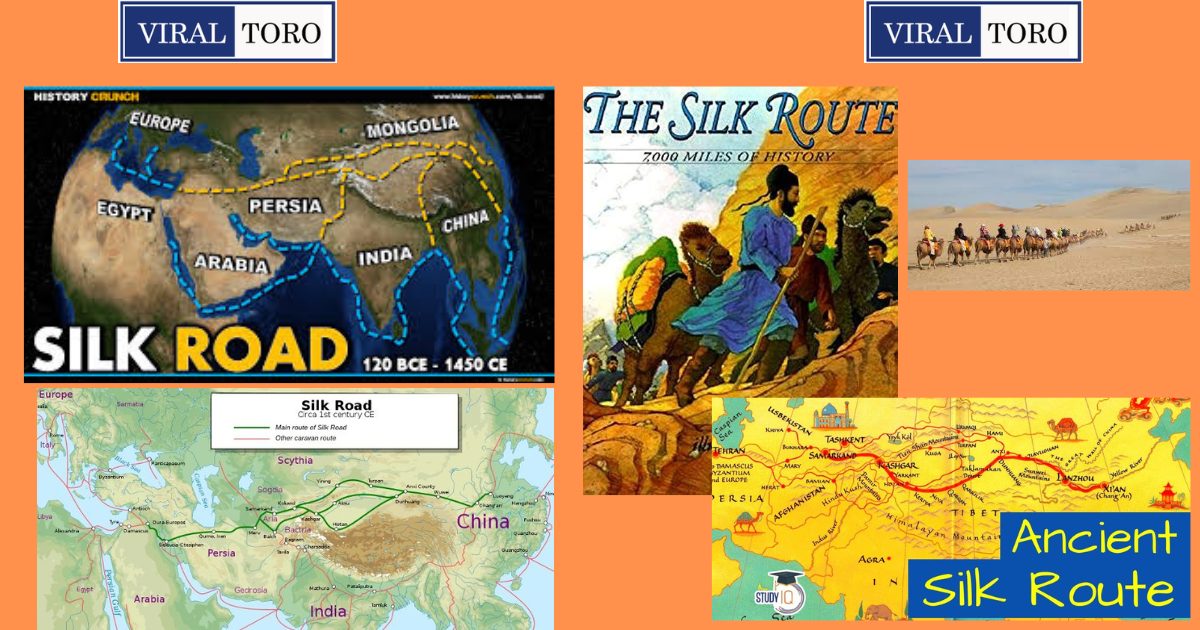“Silk Road: Weaving Antiquity’s Global Unity”
Threads of History: How the Silk Road Wove the World Together in Antiquity
The Silk Road stands as one of the most remarkable feats of human interconnectedness in antiquity, spanning vast distances across Asia, Africa, and Europe. This intricate network of trade routes facilitated the exchange of goods, ideas, cultures, and technologies, contributing significantly to the growth of civilizations and the shaping of the modern world. This article delves into the multifaceted tapestry of the Silk Road‘s history, highlighting its transformative impact on societies and its enduring legacy.
Origins and Development of the Silk Road
The Silk Road wasn’t a single road but rather a complex web of interconnected routes that evolved over centuries. It emerged during the Han Dynasty (206 BCE – 220 CE) in China, primarily serving as a trade route for luxury goods like silk, spices, and precious metals. As its popularity grew, it expanded to include both overland and maritime routes, connecting China to the Mediterranean and beyond.
Read More: Mavericks Target Ben Simmons: Quest for Excellence
Trade and Cultural Exchange
Trade along the Silk Road was not just about exchanging goods; it was a conduit for cross-cultural interactions that enriched societies along its path. The movement of people, ideas, and religions fostered a unique blend of cultures. Buddhist missionaries, for example, carried their teachings from India to Central Asia and China, leaving a lasting imprint on art, philosophy, and spirituality.
Technological Diffusion
The Silk Road facilitated the transfer of knowledge and technologies that revolutionized societies. The spread of papermaking from China to the West transformed communication and record-keeping. Advanced agricultural techniques, such as crop rotation and irrigation systems, traversed the Silk Road, enhancing food production in various regions.
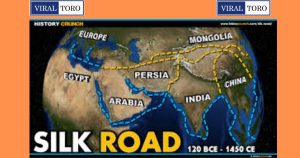
Urbanization and Empires
The trade routes facilitated the growth of urban centers and the rise of powerful empires. Cities like Samarkand, Kashgar, and Constantinople became thriving hubs of commerce and cultural exchange. Empires like the Roman, Byzantine, Parthian, and Sassanian flourished due to their strategic positions along the Silk Road.
Economic Impact
The Silk Road played a pivotal role in shaping the global economy of antiquity. It enabled the flow of goods that were in high demand, driving economic growth and prosperity for many civilizations. Precious metals, textiles, spices, and exotic animals were exchanged, contributing to the accumulation of wealth and cultural diversity.
Decline and Legacy
The decline of the Silk Road can be attributed to various factors, including the shift of trade routes due to changing geopolitical landscapes and the advent of maritime routes. However, its legacy endures. The cultural exchanges fostered by the Silk Road laid the foundation for modern globalization. The spread of languages, religions, and technologies continues to shape our interconnected world.
The Silk Road stands as a testament to human ingenuity and the desire to explore, connect, and prosper. Its impact on history, culture, and the economy reverberates through time. By weaving together distant lands, the Silk Road exemplifies the power of trade and cultural exchange to shape civilizations and unite the world. As we reflect on this remarkable antiquity, we gain insights into the roots of our modern globalized society.
Trade, Treasures, and Tales: Delving into the Rich History and Origins of the Silk Road
The Silk Road stands as one of the most captivating and influential networks of trade routes in human history, weaving together the East and West through a labyrinth of paths and connections. This ancient web of commerce not only facilitated the exchange of goods, but also served as a conduit for the transmission of knowledge, cultures, and ideas. From its genesis in the Han Dynasty of China to its far-reaching impact on global civilizations, the Silk Road remains a testament to the power of human ingenuity and connectivity.
Origins and Evolution: The genesis of the Silk Road can be traced back to the Han Dynasty in China, around the 2nd century BCE. The Chinese sought to expand their trade networks, and it was during this time that the initial routes connecting the East with the Mediterranean began to take shape. While silk was a prominent commodity exchanged, the routes were also conduits for spices, precious metals, textiles, ceramics, and more. As time progressed, the Silk Road expanded and evolved, giving rise to various branches and extensions.
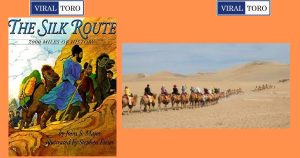
Trade and Treasure: The Silk Road‘s impact on global trade was profound. The route not only facilitated the exchange of material goods, but it also introduced people to cultures and technologies previously unknown to them. One of the most iconic commodities traded along these routes was silk, a highly sought-after fabric produced exclusively in China. The luxurious allure of silk spurred demand across the ancient world, leading to a flourishing trade industry that traversed vast distances. Beyond silk, spices like cinnamon, cardamom, and saffron made their way from the Indian subcontinent to the Mediterranean, enriching cuisines and transforming cultural practices. Precious gems, metals, and exotic woods also found their way into the trading caravans, adding to the Silk Road‘s allure as a treasure trove of riches.
Cultural Exchange and Tales: While the Silk Road is renowned for its role in trade, it was equally instrumental in fostering cultural exchange. As merchants, pilgrims, and travelers journeyed along the routes, they brought with them not only goods but also ideas, religions, and philosophies. The spread of Buddhism, Islam, Christianity, and other belief systems can be attributed in part to the interactions along these routes. Moreover, artistic techniques, architectural styles, and scientific knowledge were shared and amalgamated, leading to a cross-pollination of cultures that shaped the societies of the East and West. The tales of adventurers like Marco Polo, who chronicled his journeys along the Silk Road, continue to captivate audiences and provide insights into the diverse cultures encountered along the way.
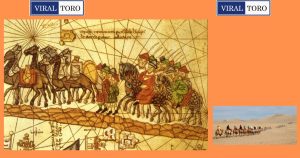
The Silk Road remains an enduring testament to the human spirit of exploration, innovation, and connection. Its historical significance transcends time and continues to inspire modern-day efforts in globalization and cultural exchange. As we delve into the rich history and origins of the Silk Road, we are reminded of the profound impact that trade, treasures, and tales can have in shaping the world we live in today.
Beyond Borders: How the Silk Road Redefined Global Connections
The Silk Road stands as a testament to the enduring power of human connectivity across vast distances and diverse cultures. This ancient network of trade routes, spanning thousands of miles, played a pivotal role in shaping global connections as we know them today. From the exchange of goods and ideas to the blending of cultures, the Silk Road was a conduit of transformation that transcended borders and redefined the course of history.
I. Origins and Evolution of the Silk Road: A. The birth of the Silk Road
Han Dynasty’s exploration of trade routes
Connection between the East and West
B. Expansion and diversification
Incorporation of multiple routes
Merchants, pilgrims, and their role
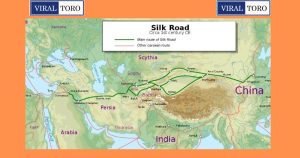
Crossroads of Culture and Commerce: A. Trade and exchange of goods
Silk, spices, and precious metals
Technological innovations and their diffusion
B. Cultural diffusion and syncretism
Spread of religions: Buddhism, Islam, Christianity
Art, literature, and architectural influences
Agents of Transformation: A. The travelers and explorers
Marco Polo’s journey and its impact
Knowledge transmission through travelogues
B. Economic impact and wealth redistribution
Rise of powerful empires along the route
Urbanization and growth of trading hubs
Challenges and Decline: A. Shifts in trade routes
Maritime routes and their influence
Political disruptions and conflicts
B. Technological advancements and changing dynamics
Decline of caravan routes with the advent of maritime trade
Cultural shifts leading to alternative networks
Legacy and Modern Reflections: A. Contemporary echoes of the Silk Road
Belt and Road Initiative: A modern Silk Road?
Globalization and connectivity in the digital age
B. Lessons from the Silk Road
Mutual understanding and tolerance
Importance of cultural exchange in shaping societies
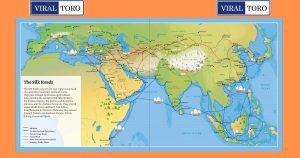
The Silk Road, a timeless symbol of human endeavor, continues to captivate our imagination even in the modern era. Its legacy serves as a reminder that global connections, forged through trade, cultural exchange, and the movement of people, have the power to transcend geopolitical boundaries. The lessons from the Silk Road urge us to embrace diversity, foster understanding, and appreciate the historical significance of interconnectedness in shaping the world we live in today.
Silk, Spice, and Everything Nice: The Marvelous Goods Exchanged on the Ancient Silk Route
The ancient Silk Route, a network of interconnected trade routes that spanned thousands of miles, remains one of the most remarkable achievements in human history. This intricate web of paths facilitated the exchange of goods, ideas, cultures, and technologies between the East and West, contributing significantly to the development of civilizations along its course. This article delves into the fascinating world of the ancient Silk Route, highlighting the unique goods that were exchanged and exploring their enduring impact on the USA and its users.
Silk – The Coveted Commodity: Silk, a luxurious fabric synonymous with opulence, played a central role in the trade along the Silk Route. Produced exclusively in China, silk was transported across vast distances, captivating the Western world with its shimmering allure. From royal courts to the common folk, silk became a symbol of status and prosperity. The introduction of silk to the USA led to the establishment of a thriving industry, with silk manufacturing becoming a significant economic contributor.
Spices – Flavoring World Cultures: The Silk Route was not just about physical commodities; it was a conduit for cultural exchange. Spices, such as cinnamon, cloves, and pepper, were highly sought after for their ability to enhance and preserve food. These aromatic treasures traveled from the East, leaving an indelible mark on Western cuisines. The flavors that now grace American palates owe their existence, in part, to the intercontinental exchange along the Silk Route.
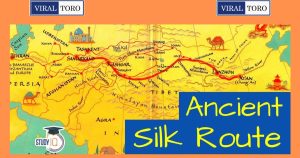
Textiles and Treasures: Alongside silk, a plethora of textiles and valuable treasures made their way along the Silk Route. Precious gemstones, ornate jewelry, and intricate pottery moved across the vast landscapes, bridging distant cultures. The introduction of these goods to the USA enriched the nation’s aesthetic sensibilities and influenced its artistic expressions.
Knowledge and Ideas: The Silk Route was not solely about material goods; it was a corridor for intellectual exchange. Philosophies, religions, and scientific advancements traversed this route, shaping the evolution of societies. The knowledge gained from these exchanges had a profound impact on the USA’s educational and philosophical landscape, contributing to its growth as a nation of diverse ideas.
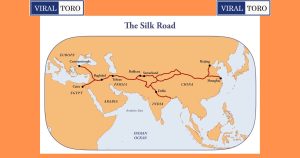
Technological Marvels: The exchange of technological innovations was a pivotal aspect of the Silk Route’s legacy. From papermaking and printing techniques to advanced agricultural practices, civilizations along the route shared their discoveries. These advancements ultimately reached the shores of the USA, catalyzing progress in various fields and fueling its own technological evolution.
The ancient Silk Route stands as a testament to human ingenuity, resilience, and the enduring desire to connect with one another. Through the exchange of silk, spices, textiles, knowledge, and technology, this remarkable network shaped the course of history, leaving an indelible imprint on the USA and its users. The legacy of the Silk Route reminds us that the threads of global interconnectedness have been woven throughout time, fostering growth and mutual understanding across cultures and continents.

